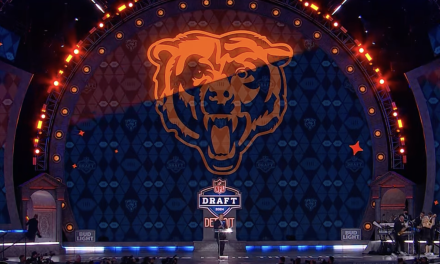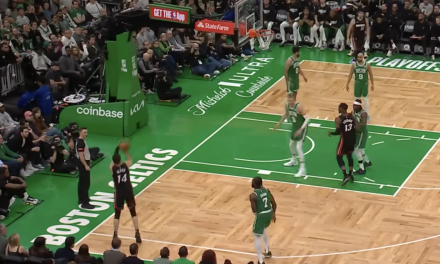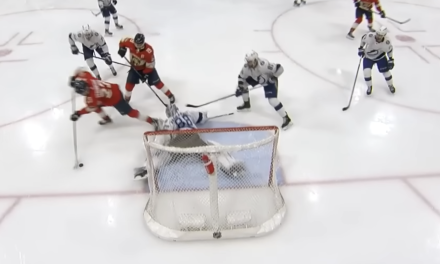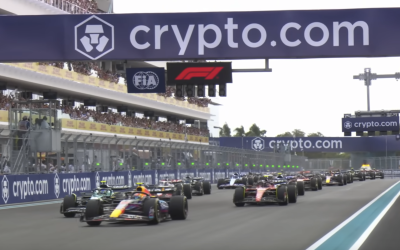South Pointe Park in Miami Beach has always been a vibrant hub of cultural expression, where the sun-drenched shores meet the eclectic rhythms of life. Its picturesque setting, overlooking the azure waters of the Atlantic Ocean, has long been a magnet for artists, musicians, and performers of all kinds. However, in recent times, a dark cloud has cast its shadow over this beloved gathering place as the city authorities decided to prohibit performances within the park’s boundaries. In response, a wave of passionate protests has surged through the community, defending the right to artistic expression in this iconic location.
The Silence that Echoed: Prohibiting Performances in Paradise
For years, South Pointe Park has been a stage for local talents to showcase their creativity, drawing both residents and tourists alike into its welcoming embrace. Musicians strumming guitars, dancers swaying to the beat, and street artists adding vibrant splashes of color to the landscape have all been integral parts of the park’s cultural tapestry. The park’s open-air amphitheater, with its picturesque backdrop of swaying palms and a panoramic view of the ocean, has been a particular favorite among performers. The decision to ban performances at South Pointe Park came as a shock to many who cherished the park’s artistic spirit. City officials cited concerns about noise levels, crowd control, and safety as the primary reasons behind the ban. While these concerns are valid to some extent, they have sparked a spirited debate about the delicate balance between public safety and the freedom of artistic expression.
Proponents of the ban argue that it is necessary to maintain order and ensure the safety of parkgoers. They point to instances of overcrowding, blocked walkways, and disturbances caused by large gatherings around performers. Concerns about amplified music disrupting the park’s tranquility and disturbing nearby residents have also played a role in the decision. City officials contend that the prohibition of performances is a reasonable step to mitigate these issues and make the park more enjoyable for everyone. On the other side of the spectrum are the artists, performers, and their supporters who vehemently oppose the ban. They argue that South Pointe Park has historically been where people from diverse backgrounds can come together to celebrate the arts. The prohibition of performances is seen as an infringement on their right to express themselves freely and to share their talents with the community. For many artists, South Pointe Park has been more than just a stage; it has been a lifeline to creativity and a source of livelihood. Musicians, in particular, have relied on the park’s open-air amphitheater to connect with audiences, build their fan base, and even make a living. The ban has left many performers struggling to find alternative venues and has put their livelihoods in jeopardy. The controversy has also raised questions about the role of public spaces in fostering cultural enrichment. Parks like South Pointe have always served as a canvas for creative expression, allowing artists to engage with the public informally and inclusively. The ban is seen by some as a step toward the commodification of public spaces, where only sanctioned events and commercial interests are allowed to thrive.
The Artists’ Lament: Navigating Life Without South Pointe’s Stage
In response to the ban, a grassroots movement has emerged, mobilizing artists, performers, and concerned citizens to defend their right to perform at South Pointe Park. Protests, petition drives, and social media campaigns have galvanized the community, calling on city officials to reconsider their decision. The movement argues that there are alternative solutions to address the concerns raised by the ban, such as designated performance times, sound regulations, and crowd management strategies. As the protests gain momentum, they have also ignited a broader conversation about the importance of arts and culture in our communities. The cultural identity of Miami Beach has always been closely intertwined with its artistic heritage, and South Pointe Park has been a crucial part of that legacy. Supporters of the protests argue that stifling creativity in public spaces diminishes the vibrancy and uniqueness of the city. In the face of mounting pressure, city officials have agreed to engage in a dialogue with representatives from the artistic community to explore potential compromises. This step is seen as a positive development and an opportunity for all parties to find common ground. The battle over the prohibition of performances at South Pointe Park is far from over, but it has ignited a passionate defense of artistic expression and the role of public spaces in nurturing creativity. As the community continues to rally for their right to perform in this iconic location, the outcome will not only determine the fate of South Pointe Park but also send a powerful message about the value we place on art and culture in our society.
Drumming for Change: The Resonant Heartbeat of South Pointe Park’s Protest Movement
Amid the protests against the prohibition of performances at South Pointe Park in Miami Beach, one particular element of artistic resistance has gained significant attention and captivated the hearts of both locals and visitors alike: the drum circle. This rhythmic and spirited gathering has become a symbol of unity and defiance, drawing people from all walks of life to the park’s sunlit shores. The drum circle at South Pointe Park is not just about music; it is a vibrant testament to the power of collective action and the unifying force of art. The beat of the drums resonates like a heartbeat, sending out waves of energy that reverberate through the crowd. Drummers of various ages and backgrounds come together, each contributing their unique rhythm and style, creating a harmonious cacophony that transcends language and culture. At the heart of the drum circle are passionate musicians who see their drums as instruments of protest. They strike their djembes, congas, and bongos with a fervor that mirrors the intensity of their convictions. Their rhythms are a call to action, a reminder that the arts should never be silenced in a place like South Pointe Park, where creativity has long thrived. The drum circle serves as a musical performance and a communal gathering point for like-minded individuals who share a deep appreciation for the arts. Dancers sway and twirl to the beat, their movements blending seamlessly with the music. Artists sketch and paint nearby, inspired by the energy of the circle, while spectators become participants as they clap and stomp to the rhythm. It’s a space where boundaries fade, and the park’s diverse community becomes one in the celebration of artistic expression.
The drum circle has also become a place of discourse and dialogue. Between beats, participants exchange thoughts and ideas about the importance of preserving South Pointe Park as a haven for artists. They share personal stories of how the park has played a pivotal role in their lives, whether as a stage for their performances or a source of inspiration for their creative pursuits. This sense of community strengthens their resolve to overturn the ban. As word of the drum circle spreads, it has garnered support not only from local artists but also from advocacy groups, scholars, and tourists who stumble upon the impromptu performances. The circle has become a focal point for media coverage, shining a spotlight on the larger movement against the ban. Through the power of social media and grassroots organizing, the drum circle’s message has reverberated far beyond the park’s boundaries, drawing attention to the broader issue of public spaces and their role in nurturing culture. While the drum circle is a potent symbol of resistance, it also embodies the inclusive and open spirit that South Pointe Park has always represented. It reminds us that art can break down barriers, bringing people together in celebration of the human experience. In the face of adversity, the beat of the drums carries a message of hope, resilience, and the unwavering belief that art should never be silenced. As the protests continue and the drum circle remains a steadfast presence at South Pointe Park, it serves as a reminder that the fight for artistic expression is far from over. The rhythm of the drums resonates as a call to action, urging all who hear it to stand in solidarity with the artists who refuse to let their voices be silenced. It’s a beat that symbolizes the enduring power of creativity and the unyielding spirit of a community determined to defend its cultural heart.
Harmonizing Hope: The Ongoing Fight for Artistic Freedom at South Pointe Park
In the heart of South Pointe Park, where the Atlantic breeze meets the sunlit shores, a movement has taken root—one that champions the fundamental right to artistic expression. The prohibition of performances within this iconic park has ignited a passionate protest, uniting artists, musicians, and a diverse community under the banner of creativity. As the drum circle continues to beat, its resonance reaches far beyond the park’s boundaries, echoing the enduring spirit of a community unwilling to let its cultural heart be silenced. The battle to defend South Pointe Park as a space for artistic freedom is far from over. It has become a symbol of the broader struggle to protect the arts in our public spaces, emphasizing their role in enriching our lives, fostering unity, and preserving our cultural heritage. This movement underscores the significance of places like South Pointe Park, where people from all backgrounds can unite, share their talents, and celebrate the human experience. As the drummers persist in their rhythmic defiance, they remind us that art transcends boundaries and speaks to the core of our humanity. It is a universal language that unites us, transcending differences and inspiring change. The drum circle symbolizes not just the power of protest but the resilience of the human spirit when faced with challenges to its creativity and expression. In the days, weeks, and months ahead, the fate of South Pointe Park’s artistic soul will be decided through dialogue, compromise, and the collective will of the community. The passionate protests have already prompted city officials to engage in discussions with artists and performers, offering hope for a resolution that balances public safety with the preservation of artistic expression. South Pointe Park’s story is a testament to the enduring importance of public spaces as incubators of culture and community. It serves as a rallying cry for all those who believe in the transformative power of art and the need to protect spaces where it can thrive. The beat of the drums at the heart of this protest is not just a call for change—it’s a reminder that, in the face of adversity, the arts will always find a way to speak their truth, inspire unity, and create a lasting legacy of cultural enrichment.


































South Florida Media Comments